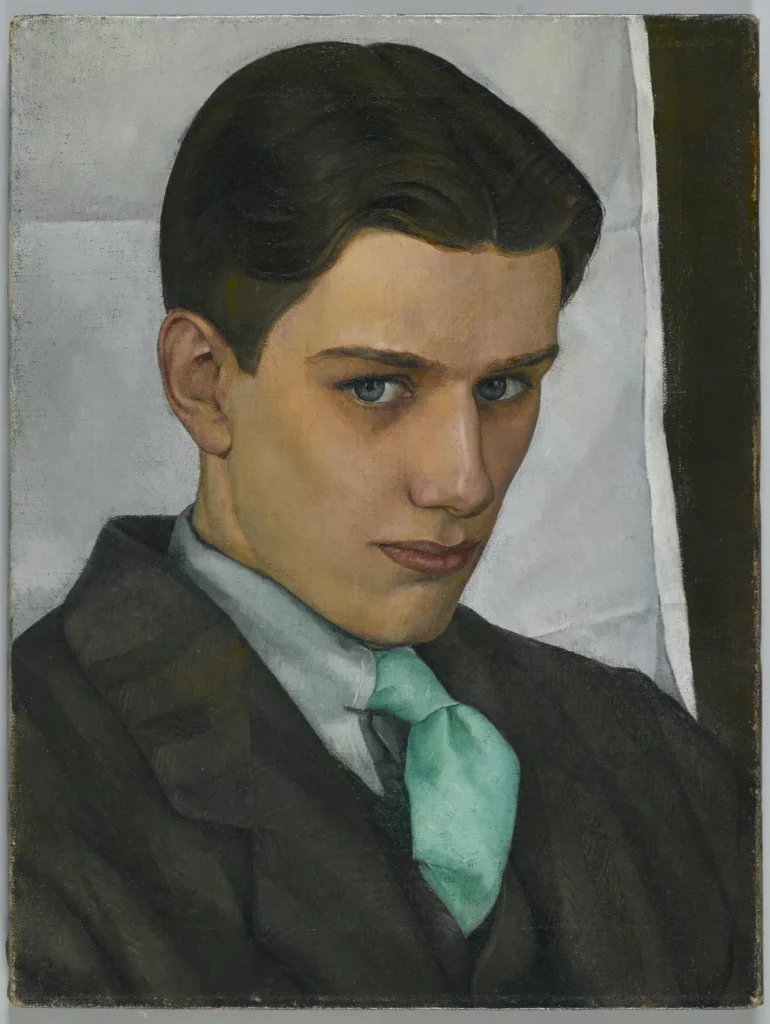
In 1926 Luigi Lucioni, 26, and his Art Students League classmate Paul Cadmus, 21, were roommates for a fellowship at the Louis Tiffany Studio on Long Island. In 1928 Lucioni painted this portrait of Cadmus, which got recognition of some kind at the exhibition where it debuted.
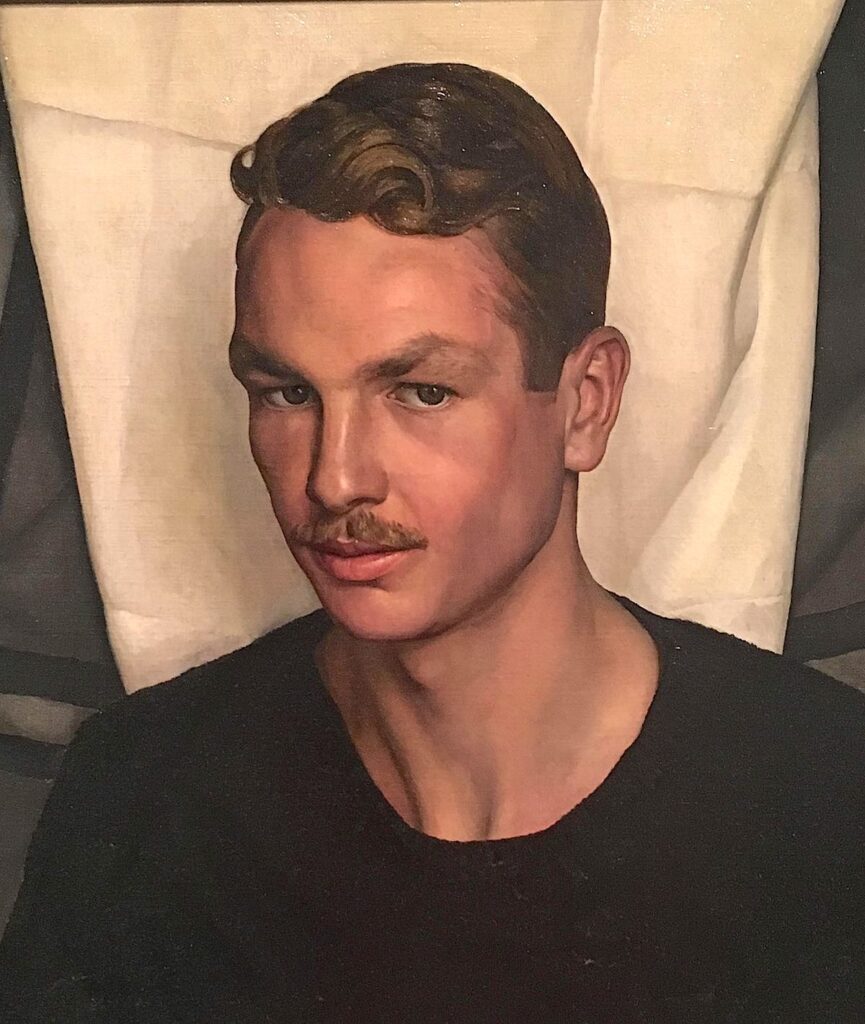
In 1930 Luigi Lucioni, 30, painted this portrait of his other Art Students League classmate Jared French, 25, in what looks like the same spot he painted Cadmus. He showed it in 1931, and it sold. As did a still life, which was acquired by the Met.
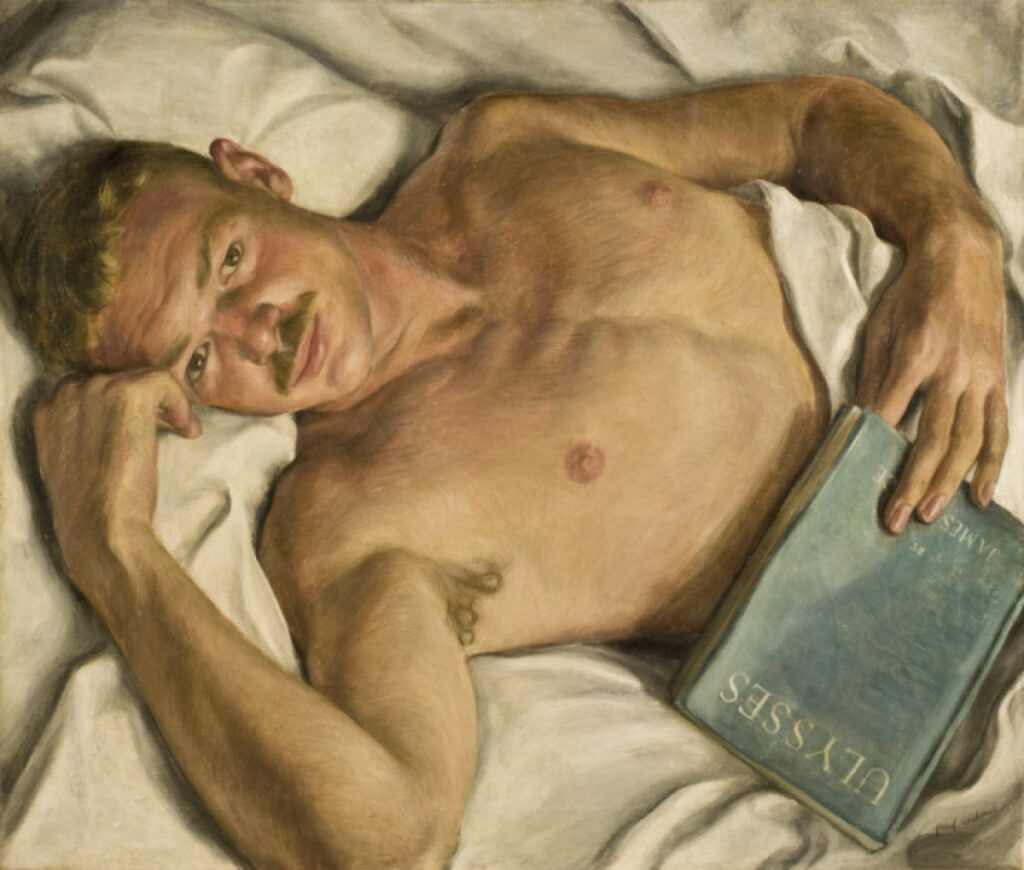
In 1931, Cadmus painted this portrait of French in bed, with a finger in a copy of James Joyce’s Ulysses resting on his bare chest. Cadmus called this his first real painting, and with French’s encouragement, he quit his commercial illustration job at an ad agency and began his career as a fine artist.
Almost no one saw this portrait publicly until after French’s death in 1988. Lincoln Kirstein included a black & white image of it in his 1992 book on Cadmus.
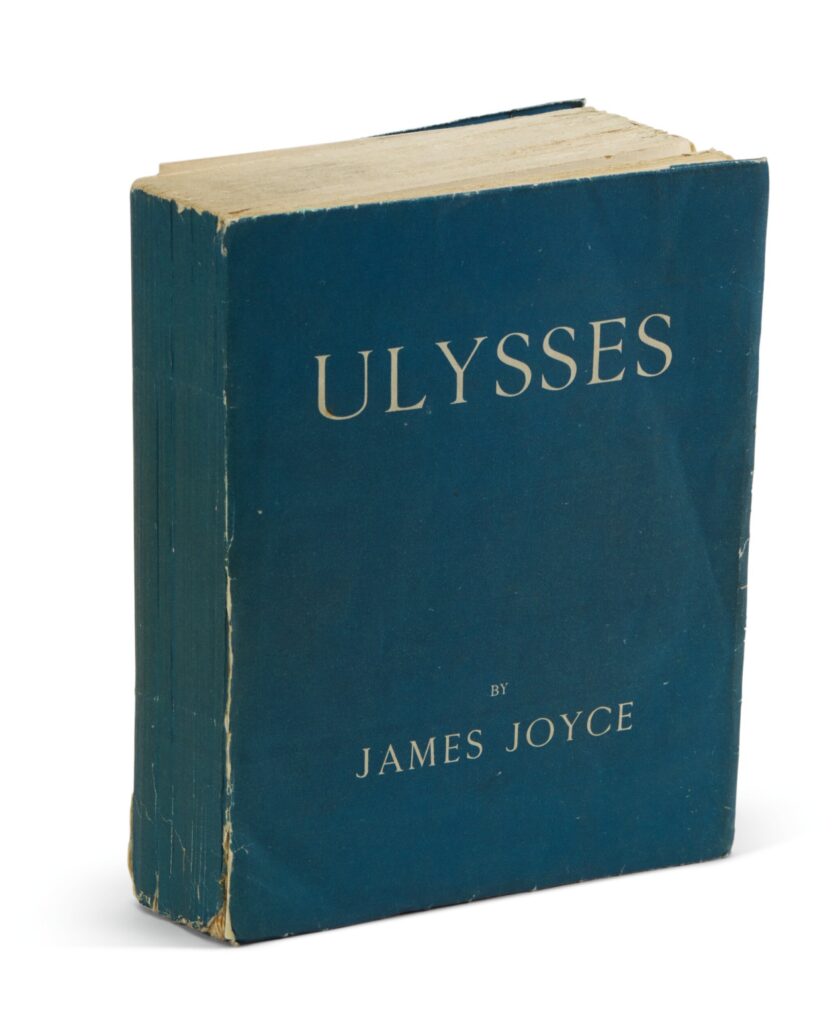
Though it was published in 1922, in 1931 there were still barely 2,500 copies of Ulysses in existence. The first edition published in Paris had 1,000 copies. The first edition published in the UK, and printed by the same French printer, had 2,000 copies, of which around 500 were reportedly burned by US Customs as they were being illegally imported. A bootleg version published in New York in 1929 was almost entirely destroyed in a raid, and also, it didn’t look like that. In 2009 a first edition of Ulysses in remarkable condition sold for GBP275,000. It had been smuggled into a Manhattan bookstore, except for the last section, with the dirty parts, it was uncut and unread. And because it went straight into a box, its cover was bright, undarkened by time.
In his 1988 oral history for the Archives of American Art, Cadmus told Judd Tully that he’d gotten the copy of Ulysses from Lucioni, who’d smuggled it from Europe. Tully asked, “What kind of impression did Ulysses make on you when you read it? Do you remember?”
“Well, I really don’t remember,” Cadmus replied, “except that, of course, I was impressed to be reading Ulysses. [laughs]”
The book was a prop. In the fall of 1931 Cadmus and French took a freighter to Europe, where they lived for two years.
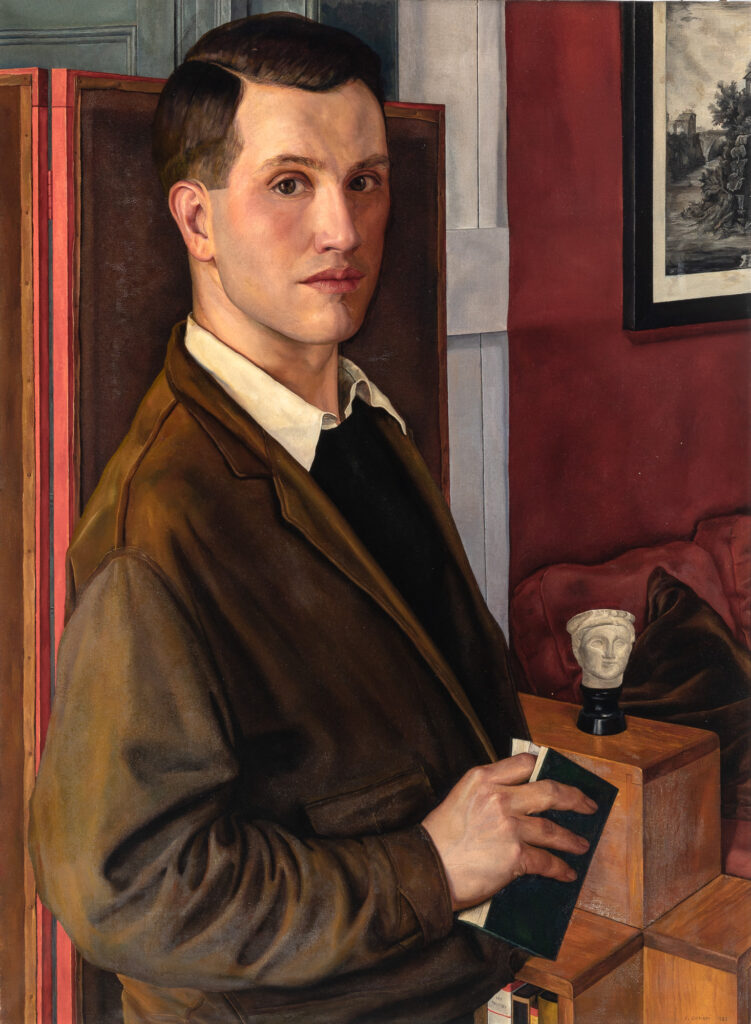
In 1933, Lucioni painted a self-portrait. It was exhibited at least once, in 1926, before it turned up at Doyle last year, where it sold for 10x its estimate. Lucioni’s finger is marking a spot near the end of a thick octavo, bound in blue.
French and Cadmus came back from Europe and shared a studio and apartment until French married Margaret Hoening, at which point they shared a studio, and Cadmus and Hoening shared French. Within a few years Lucioni stopped painting portraits and spent his time making paintings and etchings of trees in Vermont.
Previously, related? Untitled (Joyce Hartley), 2025, a work based on Marsden Hartley’s inscribed copy of Ulysses, which went from Stieglitz to Georgia O’Keefe to Juan Hamilton
